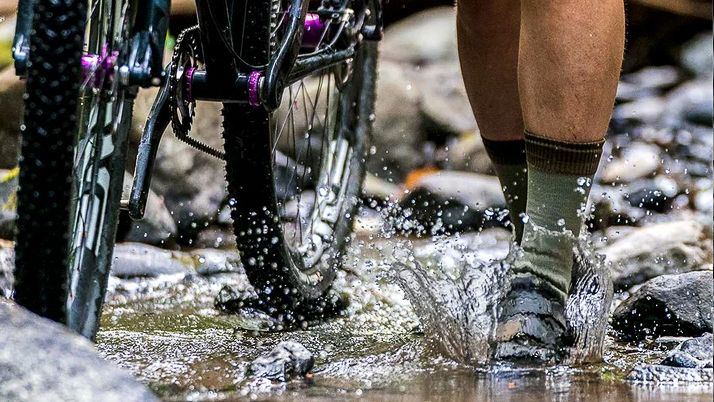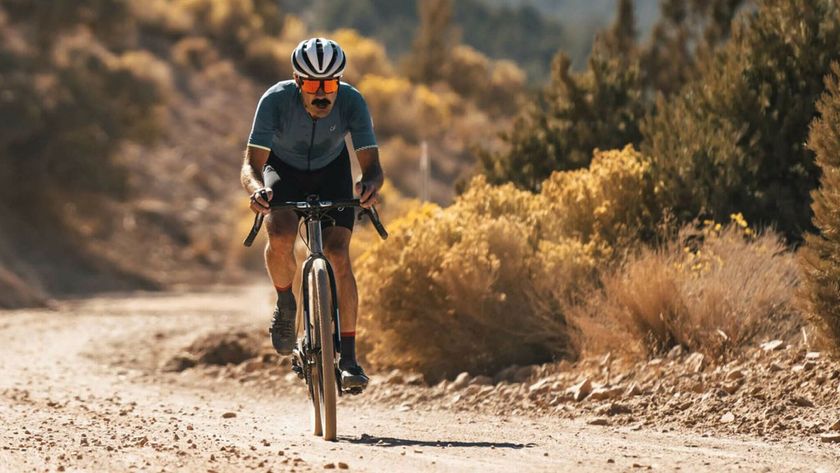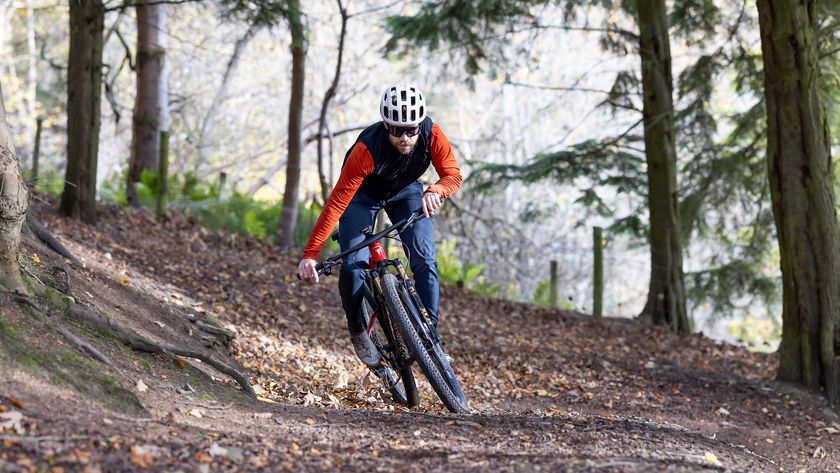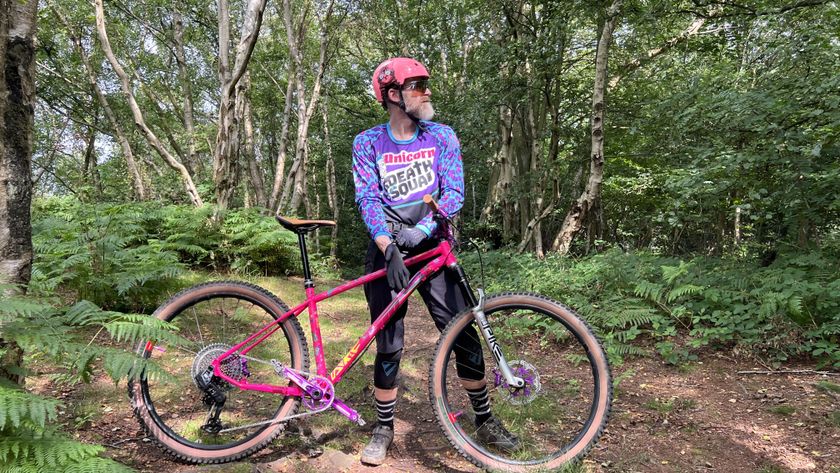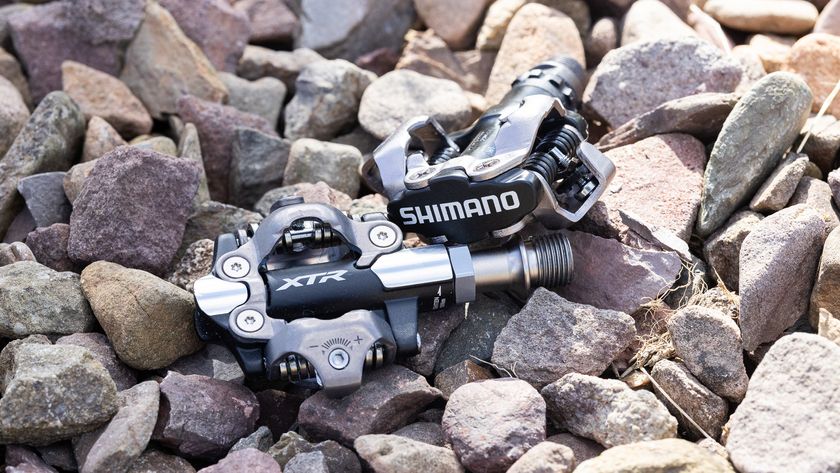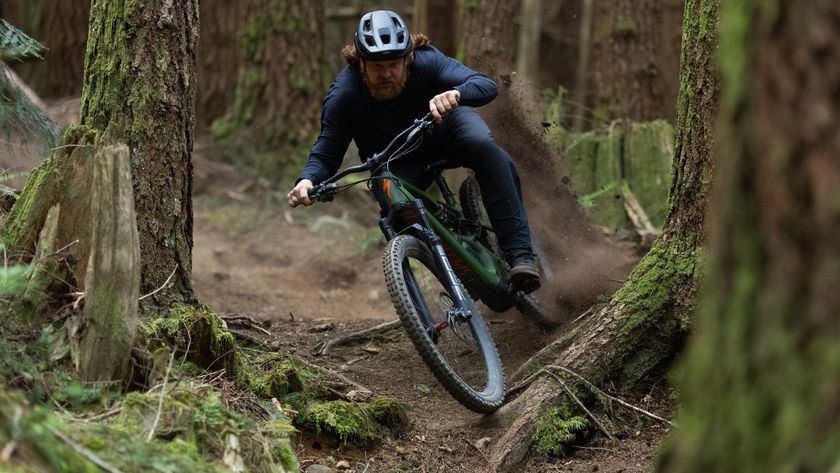Bespoken Word: Last Christmas
Guy Kesteven isn’t talking about Whamageddon this week but about all the other things you need to know so you don't just last until Christmas, but stay safe riding right through winter
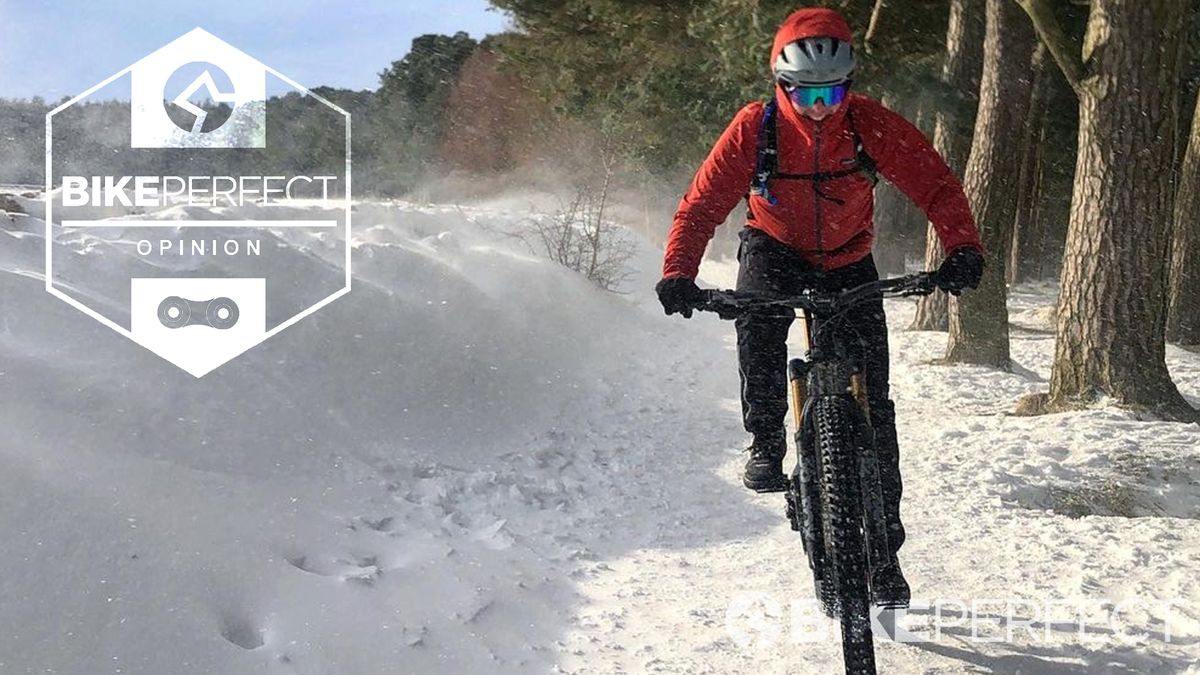
Yeah I know it’s too damn early to be using the C-word, but let’s face it some shops were swapping Scream masks for Santa hats before Halloween had even arrived. Looking at the Insta feeds of friends in higher - or higher latitude - parts of the world, winter is already rolling in pretty hard too. That got me thinking about all the people who started riding during the first Covid year, got serious over the past 12 months and are now heading into their first proper winter of riding, often with zero outdoor off-season experience beyond sledding with their kids. And to be honest, that scared the crap out of me, because mountain bikes - and particularly e-bikes - can get us into some really dangerous areas very easily.
So forgive a more somber, parental tone this week but if it helps some people to realize that super-low temperatures on a wet, windy day can be more dangerous than a double black trail and prepare accordingly, then that’s an early Christmas present everyone can enjoy, whether it’s us riders or the mountain rescue services.
What is a dangerous area?
As mountain bikers, we’re constantly assessing the level of danger we’re riding into and making judgments for drops, rocks, slippery roots and cliff edges accordingly. However, winter means adding a weather assessment to our ride planning as well. You probably realize the obvious cold spots like high, wind-exposed ridges, but did you know that air cools around 5.4 degrees Fahrenheit for every 1,000 feet you climb?
Obviously, the sun can offset that significantly, but the fact is that weather moves faster the higher you go, and when that sun goes and wind, rain or snow roll in, things can get really dangerous really quickly.
Add in the fact that shadowy north-facing slopes are a whole lot colder and more prone to snow and ice than sunny-side southern-facing slopes (when you're north of the equator, at least) and the side of the valley you choose can make a huge difference in how chilly and slippery things will be. I certainly got a massive shock the last time I span happily up towards Nan Bield in the Lake District with the sun and wind on my t-shirted back, but got hit by a storm, blown off a 25kg e-bike and I could barely pull my Gore-Tex on as I summited the pass and shivered and slithered back to safety.
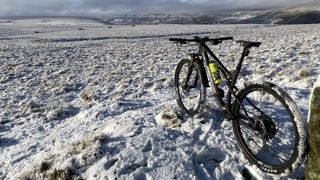
It’s also important to realize that even local, low-level trails can create dramatically changing environments within the same weather system. My local riverside woodland trails have some real shadowy cold spots that feel haunted all year round. Come winter and those can be icy traps waiting to whip your wheels out from under you and turn your hips purple while the trail is still wet a meter away. I’ve known areas trap deep, frozen snow conditions that turned mountain bike descents into perfect bobsled runs for more than a month while the surrounding moorland was axle-deep sludge. Again all of that needs taking into account with how you ride and what you wear, but more on that in a minute.
Ten minute lifesaver
There’s a really smart educational initiative going around the outdoor scene at the moment which I can’t remember (or Google) the name of but hats off - literally - to whoever thought of this brilliantly simple idea.
Anyway, next time you’re out on a ride with mates and nearly home, get off your bikes and lie down for ten minutes. Don’t put on a coat, don’t look for shelter, just lie down next to the trail - where you’d be if you crashed - and see how quickly you get cold. And as soon as your heart rate drops and sweat starts cooling we guarantee you’ll be shocked how fast things get uncomfortable. Also how long it takes to warm up once you get back on the bike and start heading home, especially if that’s downhill. Now think about how desperate things are going to get after twenty or thirty minutes or if the next person coming that way is an early doors dog walker or a farmer checking his flock. And while you’re probably imagining a remote mountain scene from an epic adventure at the moment, realize that you could be unfound for hours if you wipe out in the woods within sight of your house or the second to the last turn of a trail center. In fact, given how we tend to relax slightly in the last furlong of a ride, and knowing how many of my mates have mangled themselves as a result, it's far more likely that things could go to sh*t when you’re pretending to be Shackleton.
Your phone isn’t the answer.
Lesson learned
So what can you do to make that situation safer? First up, don’t crash and don’t have a mechanical. OK, so that’s impossible to guarantee but at least minimize excess risk by riding within your limits and keeping your bike in good working order. Learn first aid for both bodies and your bike, and take the steri-wipes, bandages, tools and spares to help get you safely off the hill or at least to that farm with the lights on in the distance.
Realize that riding alone massively increases risk compared to having someone who can put a coat over you or give you a warming cuddle - don’t be shy, we’re talking about survival here - or just keep an eye on your condition and the weather. Riding with several people also means spare riders to potentially carry you out (only after doing all the relevant spinal checks) safely or get help if you’re immovable and out of signal for calling emergency services. If you can’t convince anyone to come with you, use a signal beacon on your phone (some helmets and lights have them too) and tell someone exactly where you’re going (or at least leave a note somewhere it’ll be found.
Kit up
We’ve already talked about taking a first aid kit and spares but forget about going packless and stuff an extra layer of clothing into a bag in case the weather turns or you’re stuck for a while. A 3D-lofted mid-layer (the ones that look like a waffle) can make a massive difference but there are tons of packable puffer jackets available now too. Lay the foundations for staying warm if you’re stopped by wearing a proper wicking base layer or a merino top, not a cotton T-shirt or something that pretends to be technical because it’s got a bit of poly in yet stays sodden and sucks heat out of you like a Harry Potter dementor. Those silver survival blankets weigh nothing and take up barely any room in a hip pocket too. Even if you’re running laps from the van with your mates, have that stuff ready and make sure everyone in the group knows where it is (and where your keys are if you get knocked cold or get confused).

Hypothermia
Confused? Oh yeah, if you’ve never had hypothermia, you have no idea what a trip losing a few degrees of body heat can send you on. To my eternal shame, I nearly killed my wife by taking her out snow riding in the Yorkshire Dales when we were first courting and I still shiver thinking about how close things were to getting really bad.
Yes, we’d gotten wet falling off into icy puddles and bombing around in the snow, but she was still laughing and we were rolling down the road to home when she nipped off behind some trees for a quick nature break. Minutes later she hadn’t come back, so I went to check and found her curled up, lying on the coat she’d taken off and insisting that she’d be fine after a quick nap. Yep, the classic ‘I actually feel really warm, I’ve stopped shivering and I’m getting all sleepy’ symptoms which signal that hypothermia has you on a bewitchingly blissful VIP fast track to staying cold forever.
Getting Mrs K back to the road and navigating the last couple of km back to the car as the downward roll chilled her further was a properly terrifying experience - not least because her dad was a champion potato sack lifter and anvil thrower in his youth - and it took most of the cake and crisps in Park View stores in Pateley Bridge and hours in front of the stove at home to thaw her out.
Hypothermia is just one of a whole parade of winter issues like frostbite and exposure lined up to take your toes - or your life - and it will do so far quicker than you’d think, especially if your current understanding of ‘worst-case scenario’ is your feet being too cold to get in the shower straight away.
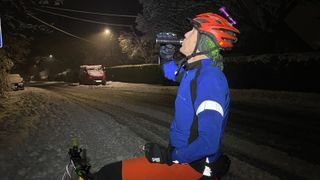
The little things
While there’s scope for stringing out the whole kit/self-care thing into much greater detail - and I probably will while there’s less tech coming out and less racing to talk about over winter - I’m going to rush off some core stuff here as it seems appropriate.
Carrying spares of the best mountain bike gloves, thick socks and base layers can make a huge difference to comfort and morale on a winter epic. Even if you never actually put them on, knowing that there’s a get-out if your fingers and toes start to suffer or you’re shivering even when you’re climbing is a real heart warmer.
Eating is heating: Staying warm while riding burns a ton of calories, especially if you’re slogging along sticky trails. That means you need to keep the furnace stoked up by snacking constantly to stay warm, and however much turkey you piled into, starving yourself on rides in January is dumb and dangerous.
Hip flasks are trouble: A slug of whisky or brandy mid-ride can flush your face, kill the shivers and give you a glow but by doing that alcohol actually takes warm blood from your core where it’s needed most. So if things are tight on temperature, save the toast to the end of the ride.
Sweat is more of an issue in winter: If you get wet in summer you might smell bad and your eyes can sting. Get wet in winter and your body’s mechanism for dumping heat can leave you freezing far too quick. Wear sweat-shifting, heat-retaining, windproof topped layers that keep you warm rather than trying to create an impermeable waterproof shell. Open zips before climbs, zip up before descents and plan to be cold for the first 30 minutes of a ride if you want to dress just right for the rest of it.
Oh, and make winter about having fun and maximum enjoyment on your bike, not training yourself into misery before the mistletoe is even up. But more of that next week….

Guy Kesteven has been working on Bike Perfect since its launch in 2019. He started writing and testing for bike mags in 1996. Since then he’s written several million words about several thousand test bikes and a ridiculous amount of riding gear. He’s also penned a handful of bike-related books and he reviews MTBs over on YouTube.
Current rides: Cervelo ZFS-5, Specialized Chisel, custom Nicolai enduro tandem, Landescape/Swallow custom gravel tandem
Height: 180cm
Weight: 69kg
